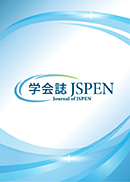Volume 2, Issue 3
Displaying 1-10 of 10 articles from this issue
- |<
- <
- 1
- >
- >|
-
2020Volume 2Issue 3 Pages 173
Published: 2020
Released on J-STAGE: February 12, 2021
Download PDF (504K)
-
2020Volume 2Issue 3 Pages 174-185
Published: 2020
Released on J-STAGE: February 12, 2021
Download PDF (1156K) -
2020Volume 2Issue 3 Pages 186-195
Published: 2020
Released on J-STAGE: February 12, 2021
Download PDF (879K)
-
2020Volume 2Issue 3 Pages 196-201
Published: 2020
Released on J-STAGE: February 12, 2021
Download PDF (1736K) -
2020Volume 2Issue 3 Pages 202-205
Published: 2020
Released on J-STAGE: February 12, 2021
Download PDF (831K)
-
2020Volume 2Issue 3 Pages 206-213
Published: 2020
Released on J-STAGE: February 12, 2021
Download PDF (1757K) -
2020Volume 2Issue 3 Pages 214-219
Published: 2020
Released on J-STAGE: February 12, 2021
Download PDF (717K) -
2020Volume 2Issue 3 Pages 220-226
Published: 2020
Released on J-STAGE: February 12, 2021
Download PDF (1317K)
-
2020Volume 2Issue 3 Pages 227-233
Published: 2020
Released on J-STAGE: February 12, 2021
Download PDF (715K)
-
2020Volume 2Issue 3 Pages 234
Published: 2020
Released on J-STAGE: February 12, 2021
Download PDF (500K)
- |<
- <
- 1
- >
- >|
